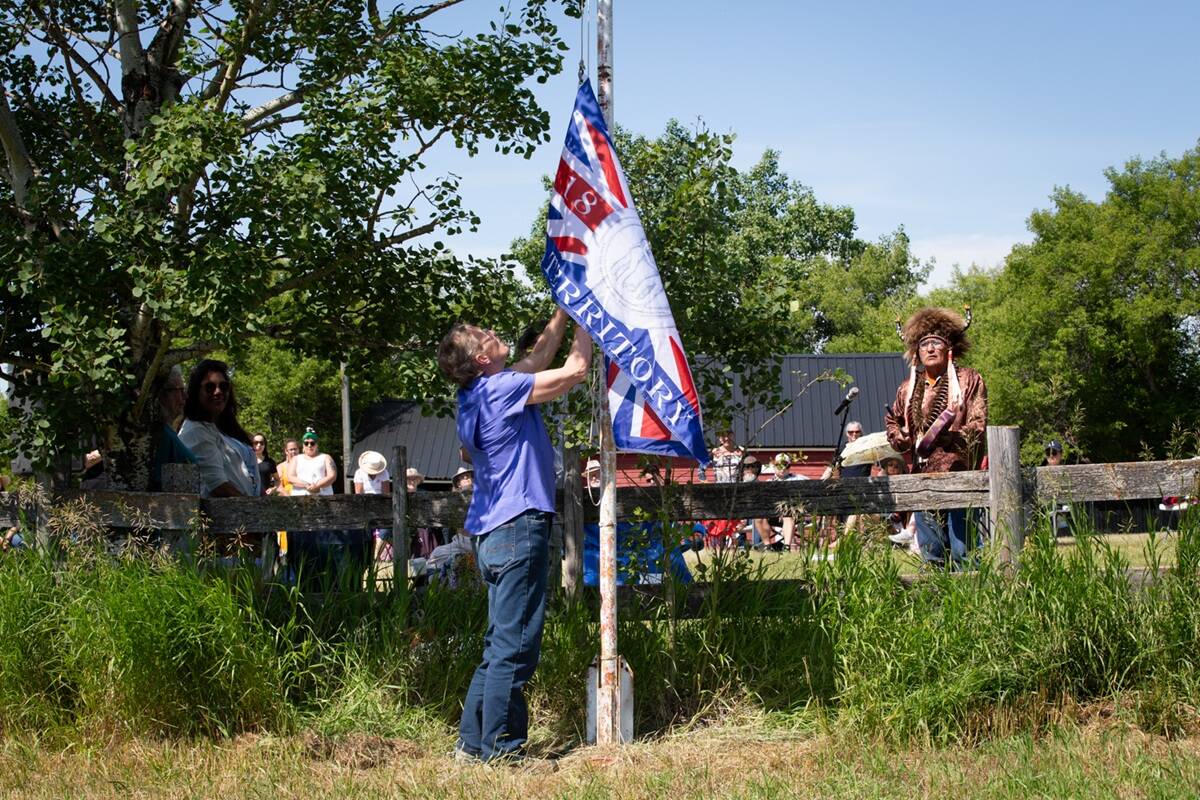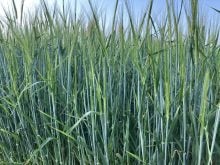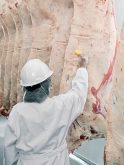Regular pregnancy checks, a routine regimen of vaccinations and working on extended grazing are just three of the many improvements Matt Bowman has implemented on his Thornloe, Ont. farm because of sound research from Canada’s Beef Cattle Research Council (BCRC).
Bowman, along with thousands of producers and the beef industry, has reaped many rewards as the BCRC celebrates its 25th anniversary in 2023.
“We are mainly focused on helping producers be more efficient — whether it’s improving productivity or reducing costs,” says Bowman, who was chair of the council from 2020 to 2022. Bowman has 125 Charolais cross cattle, cash-crops 650 acres and has a pick-your-own strawberry operation.
Read Also

Treaty Land Sharing Network expands reach in Saskatchewan and Alberta
The Treaty Land Sharing Network, which connects land holders with First Nations and Metis people, has expanded since it began in 2018
On Bowman’s operation, doing pregnancy checks — a routine he started about 10 to 15 years ago — means that he’s not feeding open cows through the winter and can identify problems with bulls so they can be swapped out before the next breeding season.
He’s also slowly increasing the amount of time his herd is left on pasture to graze into the fall so that he doesn’t have to spend as much money on feed.
“It’s less than half the cost of feeding them if they were in the yard,” he says, adding that he usually turns his herd back out onto pasture around the first of June.
While research into improving beef production continues to be one of BCRC’s main jobs, its resumé has lengthened considerably over the years to include supporting research to inform industry and government policy, building public trust, outreach and extension, environmental sustainability and more.
History
In 1998, the Canadian Cattlemen’s Association board members (as it was then known) recognized that they needed to focus on research. Some seed money was put together from the Beef Industry Development Fund and the national check-off program had just been put in place. “The intent was always that a portion of check-off funding would go towards research,” says Andrea Brocklebank, BCRC’s executive director, who has been with the organization since 2004.
“There was a very strong foundation laid in terms of the structure, including a robust peer-review process, but it was pretty small.”
Things took off when Agriculture and Agri-Food Canada introduced the Agri-Science Cluster as part of the Growing Forward program in 2008.
“Gone were the days of completely government-funded research and key to the agri-science cluster was to leverage government funds with investments from the industry,” she says.
Brocklebank says she spent a lot of time talking to provincial and national industry groups and gathering input about how the research program would progress.
“That was also when we added extension to our mandate because if we were going to do all this good work, we had to get it back out into the industry,” she says.
Global competition was the main driver towards funding and carrying out research.
“After the BSE outbreak, producers really had to reduce their costs to be sustainable,” Brocklebank says. In 2003, bovine spongiform encephalopathy (BSE) was discovered in a Canadian cattle herd, shutting down the country’s beef export market and crippling trade with several countries.
In the 2003 to 2010 period, she says labour shortages also became an issue and the exchange rate was a huge driver of costs. While scientists had known for some time about the advantages of practices such as swath grazing and extended grazing, producers really started to take note during this period.
Making progress
“The work that research people have done on genetics and cross-breeding has been significant,” says Stan Eby, who farms near Kincardine, Ont. Eby is also past president of both the Beef Farmers of Ontario and the Canadian Cattle Association and was inducted into the Canadian Agricultural Hall of Fame in 2021. Eby says that advancements in genetics and nutrition are two of the biggest contributions.
“I feel BCRC has done a good job in terms of contributing to our understanding of ruminant nutrition,” he says, adding that in the 1950s and ’60s when his parents were farming, cattle were shipped for slaughter at three to four years of age, whereas now, they’re shipped at 20 months.

He too, recognizes the effect of the BSE crisis, noting that prices for any cattle over the age of 30 months were heavily discounted, if sales could be made at all.
Eby says that marketplace conditions were extremely important in the push toward better beef research. Having regular check-off funding meant that research programs could be more consistently and sustainably financed year-over-year.
He adds that, in his 45 years of farming, animal health practices have changed dramatically.
“We used to buy cases of pharmaceutical products and now, with good vaccination routines, we don’t need all those products,” he says.
“The kind of research produced by BCRC lets producers make better decisions for both productivity and profitability,” says Tim Oleksyn. “Whether it’s land use, managing animal diseases, nutrition, breeding or animal welfare.”
Oleksyn, who is also a past chair at BCRC, has been farming with his two brothers near Prince Albert, Sask., for 50 years. He’s a firm believer that the science produced by BCRC helps develop trust and confidence in the Canadian beef product.
“The research gives confidence not only to the producer, but the government, consumers and the people we trade with,” he says.
Animal health is number one on Byron Templeton’s list of contributions BCRC has made to the beef industry.
“In terms of prevention and treatment, there’s been a major improvement compared to 25 years ago,” he says.
XTC Ranches runs 200 cows, 50 head of replacement heifers and 70 bulls for their annual February bull sale on 4,500 acres of native prairie near Eastend, Sask. Templeton and his wife Carolyn have been ranching since 1983 and, since 2014, they’ve partnered with daughter Jocelyn and her husband Travis Wasko.
BCRC’s development of forages has also been beneficial.
“We have a very small amount of irrigated land — one quarter-section — but it produces a significant amount of feed because of advances in forage,” Templeton says. “The dryland tame grass species have also improved — all ranchers have benefited from the various developments, by BCRC and other researchers in forage.”
He cites improved grazing practices and better management of native grass species as two other advantages.
“Having an organization like BCRC that does a broad variety of research and has that information handy and available is critical,” Templeton says, citing Health Canada’s reversal of a decision that would have included ground beef with other processed foods that are high in saturated fats, salt and sugar. Such processed foods will be required to carry a nutrition warning label by 2026.
“We’ve had challenges with animal welfare and environment issues and it’s great to have the BCRC reservoir of knowledge so that when we are confronted, we don’t always have to go out and study it, we’ve already got it in the bank.”
Evolution of the council
When she first started at BCRC in 2004, Brocklebank had a slide during presentations that showed a graphic with three bubbles — food safety, beef quality and productivity. That slide was the focus of research. “Now, I show a second slide that has many more bubbles — science-based policy, animal welfare, public trust, environmental sustainability and more,” she says.
“There’s been a mindset shift at the council and the board members recognize that, while not all the projects are relevant to their specific operation, they may be important for the whole industry,” says Brocklebank.
She cites issues such as the safety of new technologies such as growth promotants and animal welfare concerns around pain mitigation and transportation.
“We want to make sure we have the science to inform those discussions and we needed to make those investments,” she says, emphasizing that the BCRC’s research is done by independent scientists and is peer-reviewed so there’s no question of industry bias.
She says that the added responsibilities aren’t taking away from the original mandate.
“While we’re doing forage and grassland research, with a bit more money we can be measuring greenhouse gas emissions and carbon sequestration,” she says. “We can achieve both goals.”
For the last 15 years, the BCRC has operated on a five-year strategy cycle. Industry stakeholders, producers and national and provincial industry and government funding agencies, along with universities and extension agents are brought into the development process. It has meant a lot of co-ordination and collaborative effort, but with everyone having limited budgets, there’s a better chance for co-ordinating funding to strategically address priorities.
“It takes a lot of staff time to work with other funders, but it’s worth it to make sure we’re covering the bases,” Brocklebank says.
“It really helped when we were able to feed into the National Beef Strategy led by the Canadian Beef Advisors,” she says. BCRC was heavily involved in the strategy’s creation.
Going forward
The latest BCRC strategy, released in 2021, is closely aligned with the industry’s 10-year strategy. Along with many other priorities, the strategy has several ambitious environmental targets including a 33 per cent reduction in GHG emission intensity from primary production by 2030 and the sequestration of an additional 3.4 million tonnes of carbon annually. “We took an approach of supporting producer economic sustainability while also addressing those concerns,” she says. “They’re not mutually exclusive — if we can increase producer productivity, we can reduce the environmental footprint.”
Brocklebank is concerned about the future of the educational system and the availability of researchers, given budgetary constraints and scientists aging out of the system.
“We need to have research facilities and researchers if we’re going to tackle the big questions like environmental and economic sustainability.”
BCRC is doing its part, including supporting research capacity and helping fund research chairs, but she says much more needs to be done.
She points out that it’s not just beef, but all of agriculture that will have to pay attention to, and address, these issues.
Brocklebank is a big believer in looking into the future and trying to head off problems before they happen, as much as possible.
“If we want to continue to be a competitive industry, it’s something we have to be progressive and proactive about.”
– Lois Harris is an experienced Ontario freelance writer and editor working in the agriculture and food industry.
















